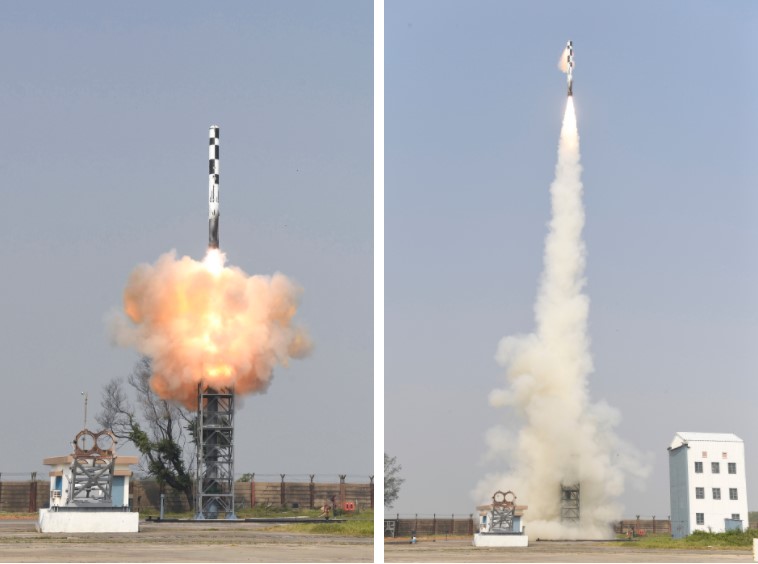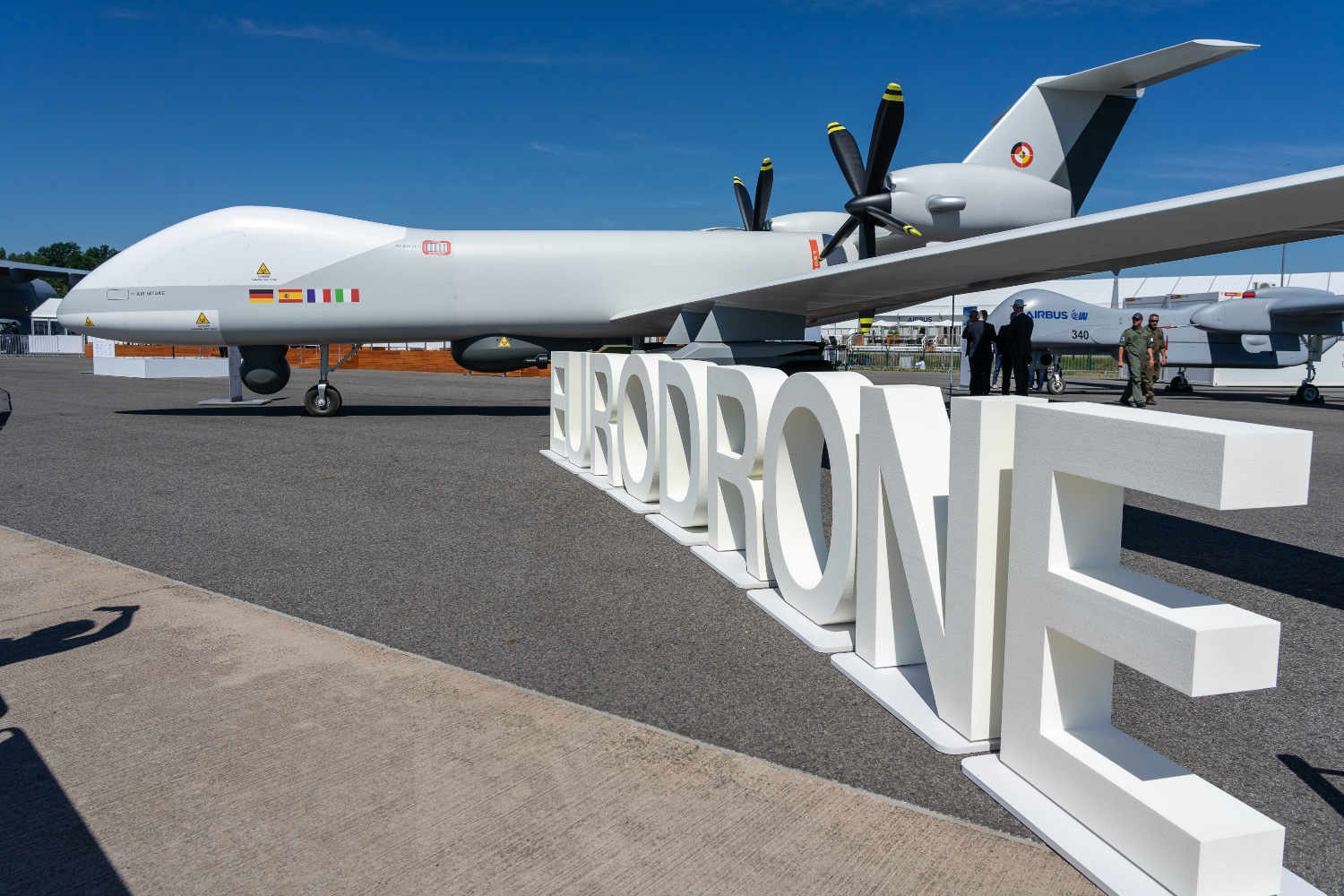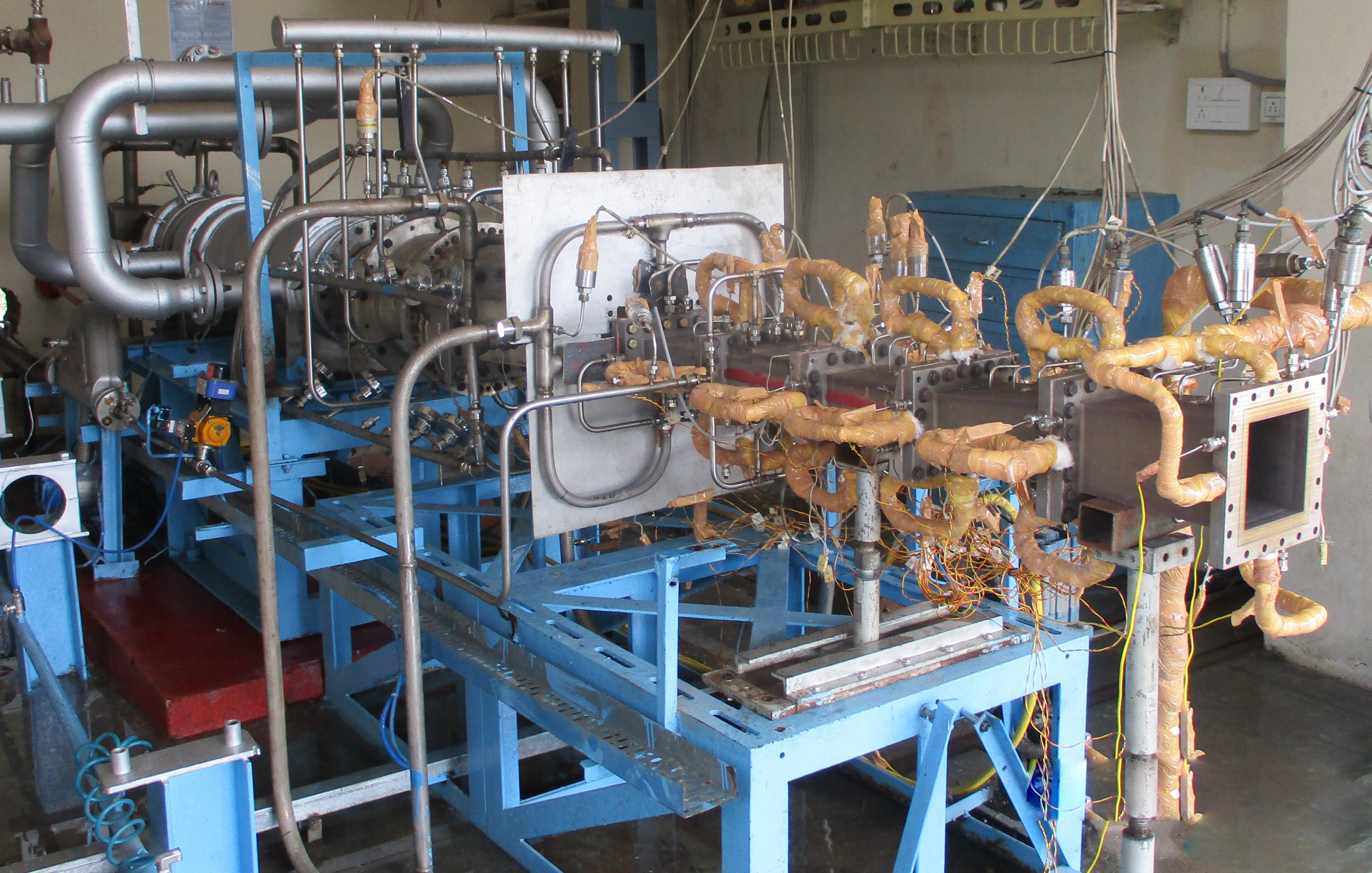SOURCE: IDRW.ORG

The Defence Research and Development Organisation (DRDO) has initiated an ambitious project to develop advanced Military Internet of Things (MIoT) applications utilizing Edge/Edge Server/Central Server-based architectures. This project is a critical step toward integrating modern data analytics and artificial intelligence (AI) into military operations, enabling real-time decision-making and efficient resource management in military environments.
The proposed solution will incorporate a robust mechanism to capture, process, and manage data from various sensors deployed in the field. The system will process this data at the IoT node level before transmitting it to a central control center or a smart military base for further analysis and storage in a centralized database.
Continue readingSOURCE: AFI

The Defence Research and Development Organisation (DRDO), India’s premier defence R&D institution, is advancing its hypersonic technology with ambitious plans for a 2000-kilometre range Hypersonic Glide Vehicle (HGV). Beyond this milestone, DRDO has revealed plans to also explore the development of an HGV capable of delivering strikes at ranges of up to 15,000 kilometres, potentially placing any target worldwide within India’s reach.
India has been actively working on hypersonic technologies, with DRDO Prime’s focus being on the development of a 2000-kilometre HGV, This system is designed to address regional threats, leveraging hypersonic speeds to evade advanced missile defence systems.
Continue readingSOURCE: AFI

India’s Republic Day Parade on January 20, 2025, marked a historic moment as the country showcased the twin launcher configuration of the Pralay ballistic missile system for the first time. Developed by the Defence Research and Development Organisation (DRDO), the Pralay missile represents a significant leap in India’s tactical missile capabilities, designed to bolster the country’s defense posture along sensitive borders.
The Indian Air Force (IAF) placed its first order for 120 Pralay missiles in December 2022, followed by the Indian Army’s order for 250 units in 2023. This year’s Republic Day display indicates the readiness of a new production batch for deployment along critical regions, including the Line of Actual Control (LAC) with China and the Line of Control (LoC) with Pakistan.
Continue readingSOURCE: AFI

In a recent strategic move, India has been granted observer status in the €7.1 billion Eurodrone program, a collaborative European initiative aimed at developing medium-altitude long-endurance unmanned aerial vehicles (UAVs). This development, managed by the Organisation for Joint Armament Cooperation (OCCAR), is a testament to India’s growing stature in international defense collaborations. As India steps into this role, it opens up avenues for significant technological insights and potential future acquisitions in advanced aerial surveillance and reconnaissance capabilities.
The Eurodrone project, involving key players like Airbus, Leonardo, and Dassault Aviation, is designed to reduce Europe’s reliance on non-European drone systems, focusing on intelligence, surveillance, target acquisition, and reconnaissance (ISTAR) missions. India’s observer status here not only bolsters its defense technology portfolio but also sets a precedent for further engagements in high-tech defense projects.
Continue readingSOURCE: AFI

India and Indonesia are reportedly close to finalizing a deal for the sale of the BrahMos cruise missile, marking a significant step in India’s defense exports. The deal, expected to be signed later in 2025, will further solidify defense ties between the two nations and enhance Indonesia’s maritime security capabilities.
This development, however, is not the first time Indonesia has shown interest in the BrahMos missile system. Jakarta has had its eye on the missile since 2010, when BrahMos Aerospace first briefed Indonesian officials on its advanced capabilities. At the time, geopolitical sensitivities and India’s cautious approach to defense exports prevented the deal from materializing.
Continue readingSOURCE: AFI

Hyderabad, India – In a significant boost to India’s burgeoning private space sector, Skyroot Aerospace, headquartered in Hyderabad, has announced plans to establish a state-of-the-art rocket manufacturing, integration, and testing facility in Telangana. With an investment of ?500 crore, this development is poised to be one of the largest private sector initiatives of its kind in the country, according to an official release issued on Tuesday.
Skyroot Aerospace, known for its pioneering work in the commercial space sector, is setting the stage for the next phase of India’s space exploration capabilities. The facility will be dedicated to the end-to-end process of rocket manufacturing, from design and fabrication to integration and rigorous testing, ensuring that every aspect of rocket development is conducted under one roof. This integrated approach is expected not only to streamline the production process but also to significantly reduce the time from design to launch.
Continue readingSOURCE: AFI

TakeMe2Space has successfully tested and validated a comprehensive array of sensors, actuators, and subsystems on its MOI-TD (Mission of Innovation – Technology Demonstrator) hardware. The testing included key components like Sun sensors, horizon sensors, solar cells, inertial measurement units, reaction wheels, magnetotorquers, airtorquers, the POEM adapter board, and an AI accelerator. This rigorous validation process is a crucial step towards ensuring the functionality and reliability of the technology intended for space missions.
In a particularly innovative approach to test its AI capabilities, TakeMe2Space uploaded large AI models from ground stations to the MOI-TD hardware. The models were then processed by executing external code directly on the hardware, after which the results were encoded, encrypted, and downloaded back to Earth for analysis. This exercise not only demonstrated the potential for real-time AI processing in space but also the security and integrity of data handling in extraterrestrial environments.
Continue readingSOURCE: RAUNAK KUNDE / NEWS BEAT / IDRW.ORG

The Indian Air Force (IAF) is set to recommend to the Ministry of Defence (MoD) a crucial change in the Multi-Role Fighter Aircraft (MRFA) tender. This recommendation involves reducing the scope of the Request for Proposal (RFP) and limiting it to Original Equipment Manufacturers (OEMs) that already meet its stringent operational and technical criteria.
By narrowing the focus, the IAF aims to expedite the procurement of 110 advanced fighter jets, a program critical for addressing the depleting strength of its combat fleet.
Continue readingSOURCE: RAUNAK KUNDE / NEWS BEAT / IDRW.ORG

The Defence Research and Development Organisation (DRDO) has marked a significant milestone with the completion of ground-based testing for the Solid Fuel Ducted Ramjet (SFDR) propulsion system, designed for the Astra MkIII Beyond Visual Range Air-to-Air Missile (BVRAAM). However, according to sources close to idrw.org, the journey from ground to sky might take longer than anticipated.
The transition to air-to-air flight trials is fraught with complexities, requiring not just the integration of the missile with various fighter aircraft but also compatibility with their radar systems. This is particularly crucial for the Astra MkIII, which is engineered to engage targets at extended ranges – surpassing the 300km mark for strategic assets like AWACS and in-flight refueling aircraft, and over 200km for conventional fighter-sized targets.
Continue readingSOURCE: RAUNAK KUNDE / NEWS BEAT / IDRW.ORG

India’s cutting-edge defence technology firm Tonbo Imaging has exported its Vault anti-UAV system, marking a significant milestone in the nation’s defence exports. Among its confirmed customers is Armenia, which has procured the system to bolster its counter-drone capabilities in the face of evolving aerial threats.
The Vault system is an AI-enabled counter-UAV solution designed to detect, track, and neutralize hostile airborne threats, such as UAVs, RPAs, or UAS, providing robust protection to the area under its surveillance umbrella.
Continue readingSOURCE: AFI

India has joined the Eurodrone program as an observer, signaling its interest in acquiring a dozen twin-engine Eurodrone Remotely Piloted Aircraft Systems (RPAS). The Eurodrone, a collaborative venture among European nations, boasts a payload capacity of over 2.3 tonnes, offering advanced surveillance, reconnaissance, and precision strike capabilities. This marks a significant development in India’s ongoing efforts to modernize its drone fleet while enhancing self-reliance and strategic partnerships.
India is already in the process of acquiring 30 MQ-9B SeaGuardian and SkyGuardian drones from the United States, manufactured by General Atomics. Here’s how the two UAVs compare:
Continue readingSOURCE: AFI

In a significant stride towards enhancing its hypersonic missile capabilities, India has developed a state-of-the-art Thermal Barrier Coating (TBC) designed to endure the extreme temperatures of hypersonic flight. This development, a collaborative effort between the Defence Research and Development Laboratory (DRDL) and the Department of Science & Technology (DST) Laboratory, marks a pivotal advancement in the nation’s defense technology.
The new TBC is made from an advanced ceramic material known for its exceptionally high thermal resistance. This coating can operate at temperatures well beyond the melting point of steel, which is crucial for the protection of components in hypersonic environments where heat stress is immense.
Continue readingSOURCE: AFI
)
The attempts of US-based Khalistani terrorist Gurpatwant Singh Pannun and his gangs are trying to revive the Khalistani armed struggle in Punjab are doomed to fail due to fundamental demographic and socio-political changes in the state. Beyond his rhetoric, Pannun’s actions appear more aligned with masking illicit activities rather than genuinely advancing any separatist agenda.
One of the most significant hurdles to reviving an armed struggle in Punjab is the declining Total Fertility Rate (TFR) among Sikhs in the state. Over the past few decades, Punjab has experienced a steady decline in birth rates, reflecting broader societal changes such as urbanization, better education, and economic development.
Continue readingSOURCE: AFI

Recent reports suggest that Bangladesh has been providing weapons training to civilians living close to the Indo-Bangladesh border, escalating tensions and prompting a reevaluation of security protocols by India. Experts are now advocating for the immediate scrapping of the Non-Lethal Treaty to empower the Border Security Force (BSF) with unrestricted operational capabilities.
According to sources, Bangladesh has been conducting training sessions for civilians, teaching them how to handle small arms and potentially engage in border skirmishes or protect against Indian border forces. This move could be seen as an attempt to assert control or deter Indian forces from taking stringent measures against illegal activities like smuggling, which are prevalent along this border.
Continue readingSOURCE: IDRW.ORG

China’s recent confirmation of the development of a hypersonic air-to-air missile (HAAM) marks a significant advancement in its defense capabilities and presents a notable challenge to India’s air defense and air superiority strategies. Announced on January 19, 2025, through the South China Morning Post, this missile is designed to operate at speeds exceeding Mach 5, equipped to target high-value assets like Airborne Warning and Control Systems (AWACS) and other strategic aircraft that are often stationed far from conflict zones.
The missile, capable of flying at speeds greater than Mach 5, leverages the advantage of speed and unpredictability, making it extremely challenging to intercept with current air defense systems.The use of arc-heated wind tunnels for testing signifies China’s focus on overcoming the severe aerodynamic heating issues associated with hypersonic travel. Temperatures experienced at such velocities can degrade missile structures or disrupt electronics, but successful management of these conditions suggests a robust, combat-ready missile.
Continue reading